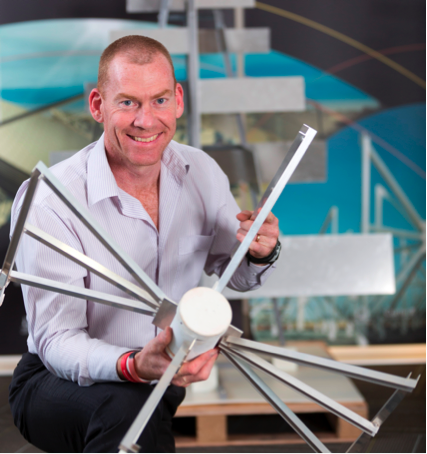NYSF … was the first step for me in considering science as a human endeavour
Steven Tingay grew up in country Victoria where there were not that many outlets for kids who were mad about science and astronomy from the age of six, even as he progressed through high school. He knew no-ne else as passionate about science as he.
He received his first book about the Universe from his uncle when he was five. A telescope was acquired soon after. “I still remember my first look at the moon through that telescope. My mum also told me that my great-grandmother used to walk me up and down the street at night as a baby, pointing out the constellations. I can’t verify that. Good story if true, however”.
Going to the NYSF in 1987, he was suddenly surrounded by others with the same passion. It made for lots of late nights during the two-week session.
“I remember a lot about the visits to science facilities – the highlight for me was going to Mt Stromlo Observatory. And I remember going to Honeysuckle Creek, where the young guy who gave us a tour opened up his telescope and started burning a hole in his dome via the reflection of the sun off his mirror”.
Steven was the first in his family to study at university. He chose the University of Melbourne for its reputation as one of the best physics departments in the country and it was close to home. “I wanted to do maths and physics as the precursor to a PhD in astrophysics," says Steven. "So, Melbourne was the natural choice. I chose the Australian National University (ANU) for my PhD because astrophysics was what I wanted to do. Full stop. I did a summer vacation scholarship at Mt Stromlo at the end of second year and loved it. When I got PhD scholarship offers at Melbourne and ANU, I chose ANU. In general, I think it is best to change institutions between undergraduate and postgraduate, to gain some diversity, aside from any other considerations”.
Steven’s career highlights are many but he says the best and most recent is leading the development of a new $50m radio telescope, the Murchison Widefield Array (MWA). The MWA project is a consortium of 15 institutions from four countries (Australia, USA, New Zealand, India) and has taken many years to develop and build in remote Western Australia. The telescope has been operating for two years and has collected 3 petabytes of data.
Almost every week the MWA team is uncovering something new about our Universe. “Our ultimate goal is to look back 13 billion years to only 1 billion years after the Big Bang, to watch the first stars and galaxies form in the universe. Leading the MWA has been a highlight because going back six years this was a project in big trouble. I took over and applied my astrophysics and engineering knowledge, as well as personnel and project management skills, to lead the project to success”.
The MWA is the only precursor for the low frequency Square Kilometre Array and the first of three SKA precursors to be fully operational. “That turn around over the last five years has been cause for considerable satisfaction, watching a big international team now exploiting the facility for science (and getting my hands on a bit of data myself!).”
For Steven, the NYSF is not just important, it's more like crucial. “Over my career, I keep coming back to the same set of considerations for success. Having smart people. Occupying a stimulating environment. Taking on big challenges. Physically bringing people together and developing networks.”
“NYSF was, and is still as far as I know, the only national activity doing this for people at a crucial point in forming their thoughts about careers. It was the first step for me in considering science as a human endeavour, rather than a collection of facts, theories, and measurements. This is a crucial realisation that scientists should have early in their careers”.
The networking aspect was fantastic. “I’m in my forties now and old NYSF colleagues from 1987 Session B keep popping up in positions of importance and influence. We have quite a club going now.”
Steven also remembers meeting a young lady at the NYSF interested in molecular biology. “We ended up going to The University of Melbourne together. We were married in 1992, have been married for 22 years now, and have two sons. So, aside from the science impact of the NYSF, it has had a fundamental impact on my overall life!”

Professor Steven Tingay attended the NYSF in 1987 (Launch of the Murchison Widefield Array Telescope – Photo credit to James Campbell)